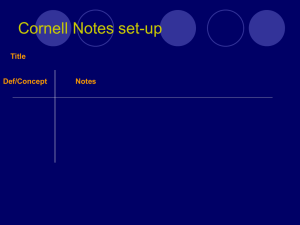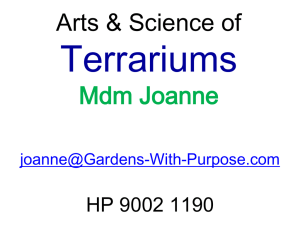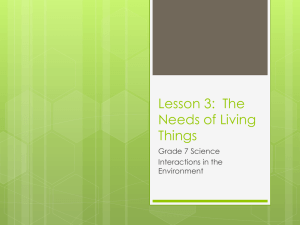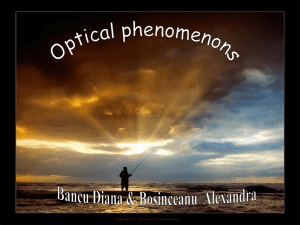Note: Earth revolves counterclockwise around the Sun.
advertisement
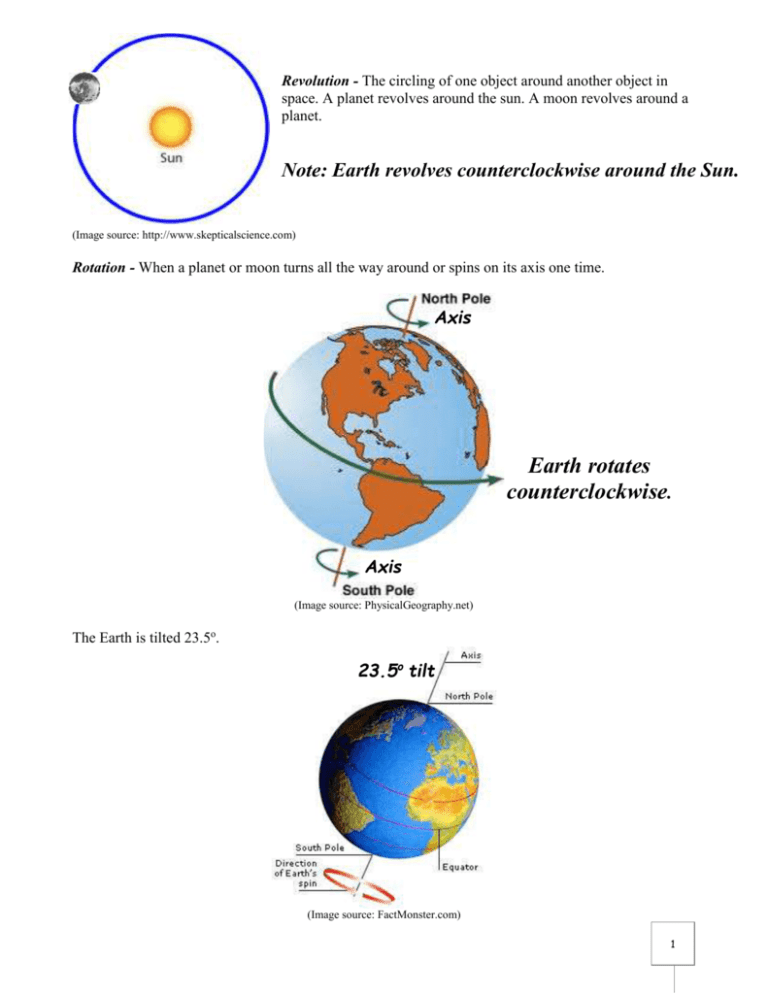
Revolution - The circling of one object around another object in space. A planet revolves around the sun. A moon revolves around a planet. Note: Earth revolves counterclockwise around the Sun. (Image source: http://www.skepticalscience.com) Rotation - When a planet or moon turns all the way around or spins on its axis one time. Axis Earth rotates counterclockwise. Axis (Image source: PhysicalGeography.net) The Earth is tilted 23.5o. 23.5o tilt (Image source: FactMonster.com) 1 Stars appear to move around the North Star (Polaris) because the Earth rotates. (Image source: Scott Stulberg Photography) The Sun appears to move across the sky because the Earth rotates. (Image Source: Starts With a Bang Blog, September 17, 2010) 2 The Moon appears to move across the sky because the Earth rotates. (Image source: http://hudsonvalleygeologist.blogspot.com) The Earth is tilted as it revolves around the Sun. (Image source: ScienceBuddies.org) 3 Why do we have seasons? It’s the tilt, baby! (Image source: http://www2.astro.psu.edu) As the Earth revolves around the Sun, the Earth remains tilted. The North Pole points at the Polaris, the North Star. (Image source: http://amitron2001.tripod.com) I am often amazed at how much more capability and enthusiasm for science there is among elementary school youngsters than among college students. Carl Sagan 4 Earth gets two types of sunlight (heat energy) during the year – direct and indirect sunlight (heat energy). (Image source: astronomy.org) When the Earth is tilted towards the Sun, we receive direct sunlight (heat energy) from the Sun. (Image source: astronomy.org) 5 (Image source: astronomy.org) Direct sunlight (heat energy) Facts about direct sunlight (heat energy). We begin receiving direct sunlight (heat energy) around spring (Vernal Equinox – March 21st). Sunlight (heat energy) covers a small area on the Earth’s surface. (Sunlight [heat energy] is concentrated.) Sunlight (heat energy) is warmer because it covers a small area. Temperatures increase. We stop receiving direct sunlight (heat energy) around fall (Autumnal Equinox – September 21st). Science never solves a problem without creating ten more. George Bernard Shaw 6 When the Earth is tilted away from the Sun, we receive indirect sunlight (heat energy) from the Sun. (Image source: astronomy.org) (Image source: astronomy.org) Facts about indirect sunlight (heat energy). Indirect sunlight (heat energy) We begin receiving indirect sunlight (heat energy) around fall (Autumnal Equinox – September 21st). Sunlight (heat energy) covers a larger area on the Earth’s surface. (Sunlight [heat energy] is not concentrated.) Sunlight (heat energy) is colder because it covers a larger area. Temperatures decrease. 7 We stop receiving indirect sunlight (heat energy) around spring (Vernal Equinox – March 21st). The Sun appears to change position in the sky through the year. (Image source: astronomy.org) The Sun appears lowest in the sky during winter. When the Sun is low in the sky, we receive indirect sunlight (heat energy) and our temperatures are colder. (Image source: astronomy.org) 8 The Sun is appears highest in the sky during summer. When the Sun is high in the sky, we receive direct sunlight (heat energy) and our temperatures are warmer. (Image source: astronomy.org) During spring and fall, the Sun appears between its highest and lowest position in the sky. During spring, sunlight (heat energy) becomes more direct and the temperatures become warmer. During the fall, sunlight (heat energy) becomes more indirect and the temperatures become colder. (Image source: astronomy.org) 9 When it is summer in Utah, what is the season in Australia? It’s winter! Why? Look at the diagram. It’s summer. The Northern Hemisphere is tilted towards the Sun. What about the Southern Hemisphere? (Image source: skepticalscience.org) Look at the diagram. The Southern Hemisphere is titled away from the Sun. It’s winter in the Southern Hemisphere. (Image source: skepticalscience.org) The body consists of three parts - the brainium, the borax and the abominable cavity. The brainium contains the brain, the borax contains the heart and lungs, and the abominable cavity contains the bowels, of which there are five - a, e, i, o and u. Unknown Middle School Student 10 Six months later. It’s winter. The Northern Hemisphere is tilted away from the Sun. What about the Southern Hemisphere? (Image source: skepticalscience.org) Look at the diagram. The Southern Hemisphere is tilted towards the Sun. It’s summer in the Southern Hemisphere. (Image source: skepticalscience.org) Q: What is more useful: the Sun or the Moon? A: The Moon, because the Moon shines at night when you want the light, but the Sun shines during the day when you don't need it. 11 Northern Hemisphere Southern Hemisphere (Image source: FactMonster.com) The Earth’s tilt is the reason for the seasons! Northern Hemisphere Southern Hemisphere Summer Winter Fall Spring Winter Summer Spring Fall (Image source: http://www.bigelow.org) 12
